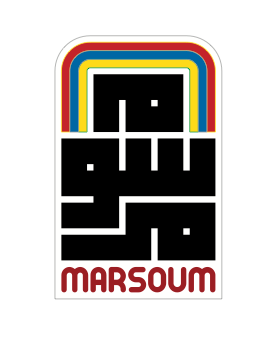
World Arabic Language Day & The Work of Mouneer Al-Shaarani
Share
Published on: December 17, 2018
About World Arabic Language Day
On December 18th, the Arabic language is celebrated in all its glory. Presented in its diverse forms from classic or dialectic, poetic or calligraphic, scientific or spiritual, the language is commemorated and appreciated for its richness as a pillar of cultural diversity.
Spoken by more than 290 million people around the world, the Arabic language has given access to a tremendous variety of identities and beliefs. Arabic has played a vital role in the knowledge acquired today, with scientific achievements encompassing a wide range of subject areas, especially astronomy, mathematics, and medicine. For 1,500 years, its lyricism and precision have significantly contributed to the world we know today.
The Arabic language holding the fifth place amongst the most spoken languages of the world encouraged The General Assembly of the United Nations to adopt a new resolution. On December 18th, 1973, they introduced Arabic as the sixth official language of the United Nations. Honoring this decision, in 2010 the UN Educational, Scientific, and Cultural Organization – UNESCO established the World Arabic Language Day to be celebrated every December 18.
The day aims to value and promote multilingualism and cultural diversity, and raise awareness and respect for the culture of the Arabic language. It highlights and recognizes its outstanding contributions to the heritage of humanity.
The Arabic alphabet is written from right to left, and consists of 28 letters. The sacred Arabic scripture started to develop after the revelation of the Quran. Prior to Islam, Arabic was a spoken language for the most part, with a limited alphabet that didn’t do it much justice. As Islamic history suggests, the Quran was revealed to Prophet Mohammad by Archangel Gabriel in the Arabic language. The establishment of the Arabic language as the main language of the Muslim empire coincided with the belief that, in order to copy the Quran, the writing must be made as beautiful as possible.
The script became not only a vehicle for communication, but also an outlet for spirituality, creativity, and expression, with a variety of beautiful forms of the script evolving out of Egypt, Turkey, Iraq, and Iran.
One artist with a deep appreciation for the Arabic script is the internationally acclaimed Mouneer Al-Shaarani. Al-Shaarani uses calligraphy art to inspire the people of his nation in Syria. By creating highly intellectual work that reflects his interest in modern poetry and literature, as well as Islamic, Christian and Sufi philosophy, Al Shaarani creates art for people to connect with and feel.



Mouneer Al-Shaarani's Impact on Arabic Calligraphy
A renowned calligrapher, Mouneer Al-Shaarani was a student of the Syrian master calligrapher, Badawi Al Dirani, and graduated in 1977 from the Faculty of Fine Arts in Damascus University. He has worked as a calligrapher and a book designer since 1968; he is a published author, and a developer of several Arabic typefaces.
Al-Shaarani gained international acclaim for his calligraphy. His work has been acquired by many institutions including the Reitberg Museum in Zurich, the Museum of Contemporary Art in Tunisia, the Museum of Red Cross in Geneva, the Museum of Islamic Art in Malaysia, and the Museum of Contemporary Art in Cairo. His work can also be found in private collections in Dubai, Abu Dhabi, Qatar, Amman, and Bahrain.
Although Mouneer Al-Shaarani’s work is rooted in the traditions of Arabic calligraphy, his art transforms classical scripts into modernist forms. His inspiration is derived from all things, “I endeavoured to produce a calligraphic work that is not dependent on borrowing from other arts, and that doesn’t derive its aesthetics from anything else. In my work, there is only a pairing between general aesthetic of the arts and the essential aesthetic characteristics of Arabic calligraphy. I chose some extremely ancient calligraphy styles such as Kairouan Kufi, Square Kufi, and Almashriki Kufi. I studied the characteristics of each style, developed their letters, completed their shortcomings, amended their rations, and reformulated them structurally and synthetically with modernistic logic” he told The National, in an 2015 interview.
With lines derived from poetry, and holy scriptures such as ‘understanding comes from experience’, and ‘the light of the body is the eye’’ Mouneer Al-Shaarani is taking deeply classical words, modernizing them calligraphically, with the intention to inspire and evoke human feelings. His calligraphy and his work carry the history, and the majestic allure of the Arabic language into modern day pieces of art.
By Jeeda Massoud
